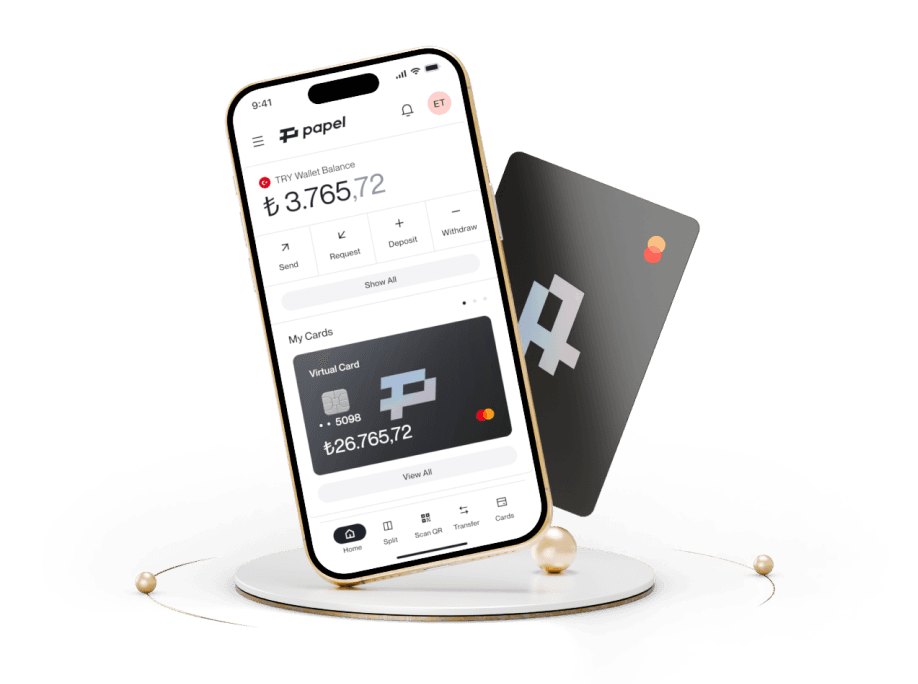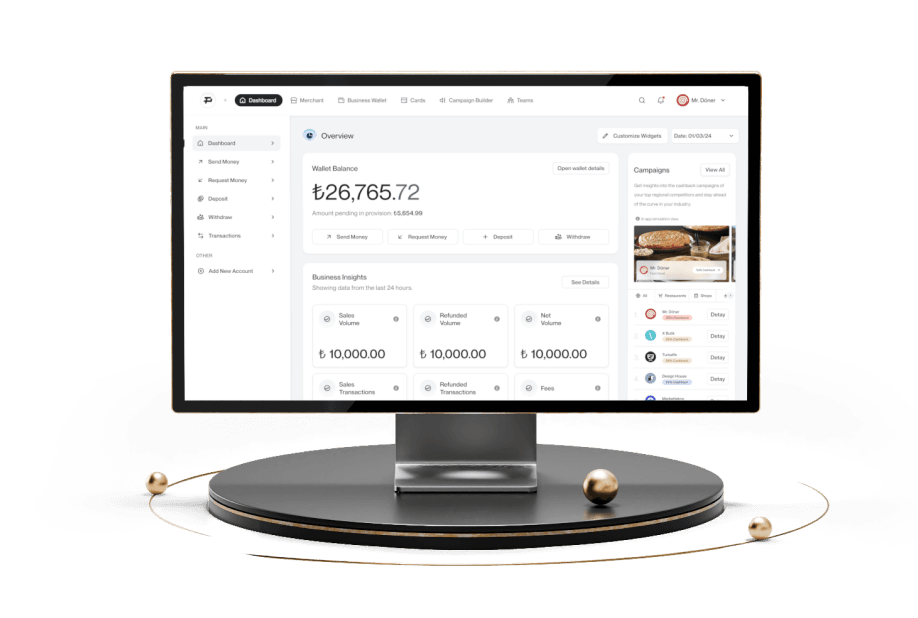How to Receive Remote Payments?
As the business world rapidly digitizes, payment methods are evolving to keep up. Today’s customers expect easy, fast, and secure payment options when purchasing products or services. At this point, remote payment methods provide a great advantage for businesses. Whether you’re selling through an e-commerce website or a social media account, numerous modern solutions are available that enable you to receive payments without physical contact. In this Papel Blog article, we explain everything you need to know step by step — from the primary remote payment methods to secure collection tips.
Primary methods for receiving remote payments
In today’s world, where it’s possible to collect payments without physical contact, remote payment options have become crucial for businesses. Companies can offer customers a variety of remote payment methods, increasing customer satisfaction and boosting sales. Since each payment method has different advantages and areas of use, choosing based on your business’s specific needs will be more beneficial. Here are some of the options you can consider:
Receiving payments via virtual POS
Businesses can accept payments via credit or debit cards through virtual point-of-sale (POS) systems — the digital equivalent of physical POS systems — on their websites or mobile applications. Supported by security protocols such as 3D Secure, virtual POS not only offers secure shopping but also provides customers with installment payment options and the ability to transact in different currencies. If you’re looking to benefit from virtual POS solutions, Papel is here for you! Apply now for Papel’s virtual POS and start receiving payments immediately with competitive commission rates.
Receiving payments via payment link
One of the most practical remote collection methods is the use of a payment link. In this method, the seller creates a customized payment link that includes the amount and a description and then shares it with the customer via SMS, email, or WhatsApp. The customer clicks the link and securely completes the payment using a credit or debit card. Especially ideal for businesses that don’t have a website or that sell via social media, Papel’s payment link system is worth exploring. With Pay with Papel, you can generate payment links instantly without needing any technical infrastructure and start receiving payments quickly.
Receiving payments via QR code
This contactless and fast payment method allows the business to generate a QR code specific to the payment amount and present it to the customer. The customer then scans the code using mobile banking or a digital wallet application to complete the payment. This is a practical and fast option, especially useful in settings where physical contact is to be minimized.
Receiving payments via wire transfer/EFT
Wire transfers and EFTs are among the most traditional methods of remote payment. You can request that customers directly transfer the payment to your bank account by sharing your account details. While it’s cost-effective, this method requires manual verification, which can prolong the collection process. Additionally, processing hours and interbank transfer times can also affect the payment timeline.
Receiving payments via digital wallets
Digital wallets, such as Papel Wallet, enable users to store their card information and make quick, secure payments. Since transactions can be completed easily using these wallets, the use of digital wallets has become increasingly popular — especially among younger users.
Receiving payments via mail order
Mail order is a method where the customer shares their card details either physically or via phone or email, and the seller manually initiates the payment by entering the card details into a point-of-sale (POS) device. Particularly suitable for businesses that sell via phone or subscription models, mail-order transactions typically don’t involve 3D Secure. Therefore, it’s essential to implement extra precautions when using this method.

Security measures when receiving remote payments
When receiving remote payments, security is a top concern for both businesses and customers. Here are several key measures you can take to enhance the security of your remote payment process:
Using SSL certificates
To protect your customers’ personal and card data during payment, your website should have an SSL certificate. This certificate encrypts the data, preventing unauthorized access by third parties. Websites with SSL display “https://” in the address bar and show a padlock icon to indicate security. This increases customer trust and ensures secure transactions.
Using 3D secure
3D Secure is an additional layer of security that verifies the cardholder's identity during online shopping. In this system, a one-time password is sent to the cardholder’s mobile phone by the bank during the transaction. Without entering this code, the transaction cannot be completed, thus preventing unauthorized use. This reduces the risk of fraud and the business’s exposure to chargebacks.
Using reliable payment infrastructure
It’s crucial to work with reliable payment service providers that comply with PCI-DSS standards. These providers utilize various encryption and security protocols to safeguard card information and take necessary precautions to ensure that customer data and transactions are processed securely.
Ensuring extra security in mail order transactions
In mail order transactions, where customers send their card details via phone, email, or fax and the business manually processes the payment, it’s vital to store and handle card details securely. Recording customer approval in either written or verbal form can strengthen your legal position in the event of disputes.
Being cautious with QR code payments
While QR code payments offer speed and contactless convenience, there’s a risk of fraud through fake QR codes. Customers should verify the source and accuracy of the code before scanning, and businesses should update their QR codes regularly and present them securely to minimize risk.

Common problems when receiving remote payments
Although receiving payments remotely is often fast and practical, specific issues may arise. Common problems include bank blocks, payment delays, and technical errors. Bank blocks typically occur due to suspicious activity, overdue payments, or legal reasons. To resolve this, the cardholder should contact their bank to determine the cause and take the necessary steps to remove the block. For instance, a bank may impose a block due to late payment, unusual spending behavior, or foreign transactions.
Another issue frequently encountered in manual payments, such as wire transfers or EFTs, is payment delay. This can disrupt cash flow and reduce customer satisfaction. Delays can be caused by the customer’s transfer timing, interbank processing durations, or public holidays.
Error codes are another challenge encountered during online payments. In virtual POS systems, error codes that disrupt the payment process should be diagnosed by understanding their meanings and contacting the bank if necessary. For example, code “05” indicates that the transaction was declined by the bank, “51” means there are insufficient funds, and “91” represents the bank was unreachable.
Instantly accept payments with Papel
With its remote payment options, Papel makes it easy to accept payments. Through Papel’s mobile app, you can quickly create a payment link, generate a QR code, or receive payments via virtual POS. Whether you’re a small or large business, Papel offers fast and secure collection solutions for all scales. If you’d like to learn more about Papel’s payment services, be sure to visit our Solutions for Merchants page.
This blog post contains general information, not legal, financial, or investment advice. The content is prepared for informational purposes only, and you are advised to seek professional advice for your specific circumstances. The expressions in this article do not carry any binding nature or responsibility and reflect only the author’s evaluation. All your decisions are your responsibility, and Papel Electronic Money and Payment Services Inc. accepts no liability for any consequences arising from them.

